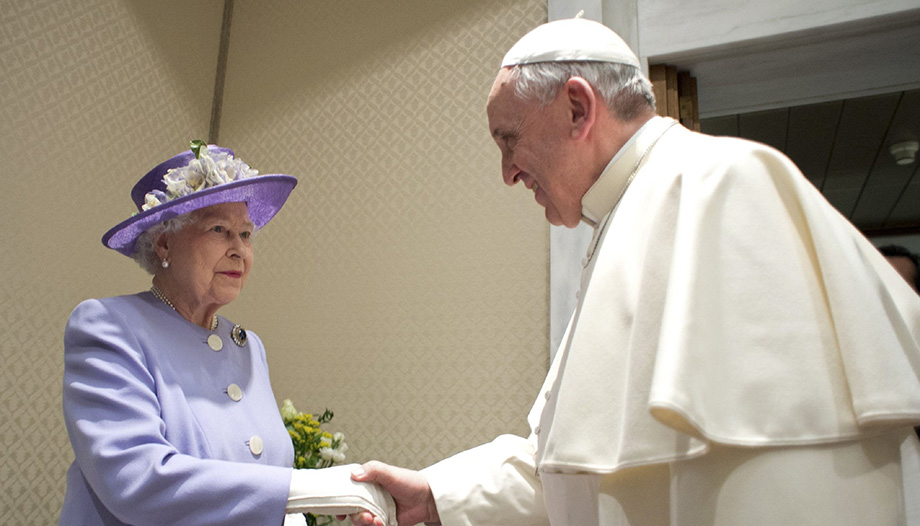This month marks the Platinum Jubilee of Queen Elizabeth II, 70 years since her accession to the throne on February 6, 1952. She is the longest reigning monarch in British history. Across the country, and across the Commonwealth, people have joined in the festivities to mark this important occasion for the Queen.
Among those commemorating this historic moment, the Bishops' Conference of England and Wales established that, at all Sunday Masses on June 4 and 5, 2022, in every parish, prayers be said for Her Majesty the Queen, including an intention in the Prayer of the Faithful and at the end of the Mass.
Pope Francis even sent a telegram to congratulate Her Majesty; and he has donated a cedar from Lebanon to the Queen's Green Canopy initiative, a project that invites people across the UK to plant a tree to commemorate the Jubilee.
These gestures of mutual affection between the royal family and the Catholic Church mark an important historic step for both the United Kingdom and the Vatican.
It is important to remember that it was not until 1829 that England introduced the Emancipation Act, restoring most civil rights to Catholics.
However, even after this law, it has been a long road for Catholics to be publicly accepted within English society.
In the past, converting to Catholicism sometimes meant losing status in English society, as St. John Henry Newman and J.R.R. Tolkien's mother, Mabel, had to endure.
Elizabeth II: key to improving relations with the Church
Queen Elizabeth II has arguably contributed to improving relations with the Catholic Church in the United Kingdom. In 2014, she and her husband, Prince Philip, the Duke of Edinburgh, even visited Pope Francis at the Vatican to mark the centenary of the restoration of diplomatic relations between the United Kingdom and the Holy See. In addition, she has personally met five popes, four of them as Queen, and Pope Pius XII, even as Princess.
This is quite significant, since before the reign of Queen Elizabeth II the first sovereign of Great Britain to visit the Pope was King Edward VII in 1903, after three and a half centuries, followed by King George V in 1923.
As Joseph Pearce, renowned Catholic writer and author of the new Ignatius Press book, writes "Faith of Our Fathers: A History of the Real England."has written for Omnes: "Unlike her predecessors, Queen Elizabeth has fostered warm relations with the papacy. In particular, she has not been shy about meeting with the many popes who have occupied the Chair of Peter during her long and illustrious reign. She met John XXIII at the Vatican in 1961 and met John Paul II on three separate occasions: at the Vatican in 1980, during the Pope's historic visit to England in 1982, and once again in 2000. She met Benedict XVI during his successful visit to England in 2010, during which he beatified John Henry Newman, and Pope Francis in 2014."
Catholic relatives of Elizabeth II
Moreover, even within the Queen's own family and those close to her there have been conversions to Catholicism. As Joseph Pearce adds, "in 1994, the Duchess of Kent was received into the Church, the first member of the royal family to convert publicly since the passing of the Act of Establishment in 1701. That same year, Frances Shand Kydd, mother of Princess Diana, was also received into the Church.
In 2001, Lord Nicholas Windsor, son of the Duke and Duchess of Kent, was received into the Church, thereby forfeiting his right of succession to the throne under the terms of the Act of Settlement.
At his baptism as an infant, Lord Nicholas had as godparents the heir to the throne, Prince Charles, and Donald Coggan, Anglican Bishop of York and later Archbishop of Canterbury.
In 2006, as required by the Royal Marriages Act of 1772, he needed the monarch's consent for his marriage to a Catholic, the Queen's granting of the necessary permission being further proof of her cordial attitude towards the Church. Since his conversion, Nicholas Windsor has been a tireless and outspoken advocate for the protection of unborn children. In December 2019, Queen Elizabeth's former Anglican chaplain, Gavin Ashendon, was welcomed into the Church, having served the queen as her personal chaplain from 2008 to 2017."
From a time when Catholicism was banned, even brutally punished, in Britain, to the current public acceptance of the faith, even within the royal family, is a major transition.
Does not hide his faith
Although there are still barriers to overcome, the Queen's example of perseverance, her willingness to dialogue and, ultimately, her total commitment to serving her nation is an invaluable leadership testament to all.
As the Bishop of Shrewsbury, Mark Davies, noted during his homily on the Feast of Pentecost, "the Queen makes no secret of the fact that it is her Christian faith that has enabled her to respond to the innumerable demands of her life over seven decades. A life marked by a daily rhythm of prayer and Sunday worship that has been the common thread of all the changes and convulsions of her reign. Indeed, in the modern era it is impossible to imagine how such a long service could be lived without that sense of Christian vocation."
The Queen's reign will inevitably leave a significant mark on British history and, for the moment at least, many are pondering the future of the royal family once she is gone; and what example they will want to set.





 Pope's and Newman's ideas for sharing the faith
Pope's and Newman's ideas for sharing the faith





